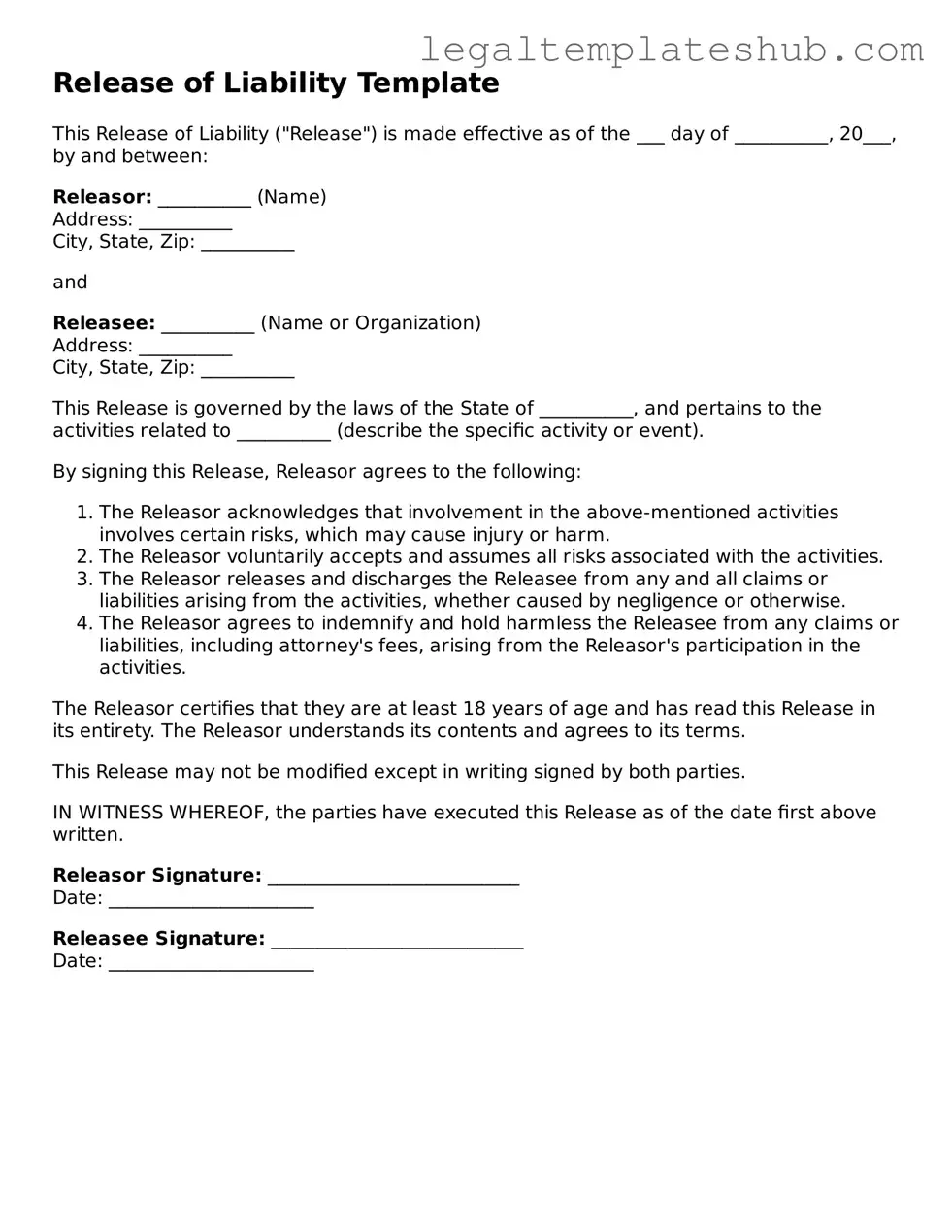Printable Release of Liability Template
A Release of Liability form is a legal document that protects an individual or organization from being held liable for injuries or damages that may occur during a specific activity. By signing this form, participants acknowledge the risks involved and agree not to hold the responsible party accountable. Understanding the implications of this document is crucial for both parties involved.
Ready to take the next step? Fill out the form by clicking the button below.
Access Editor
